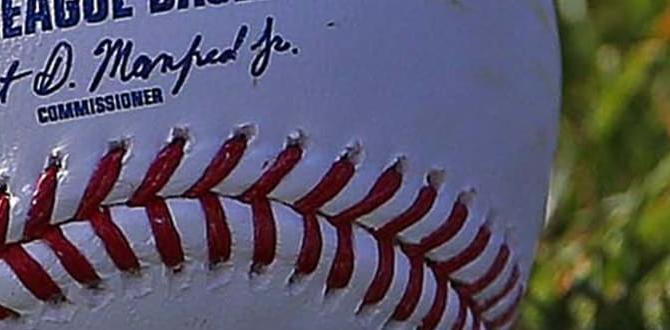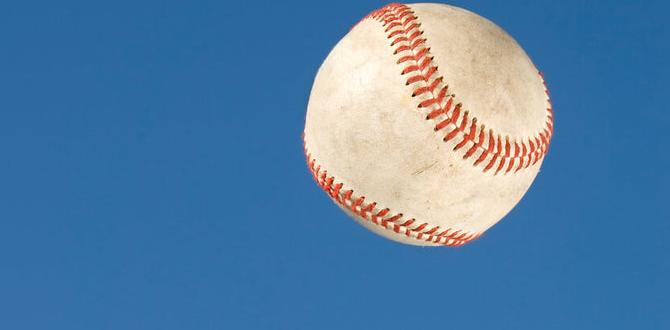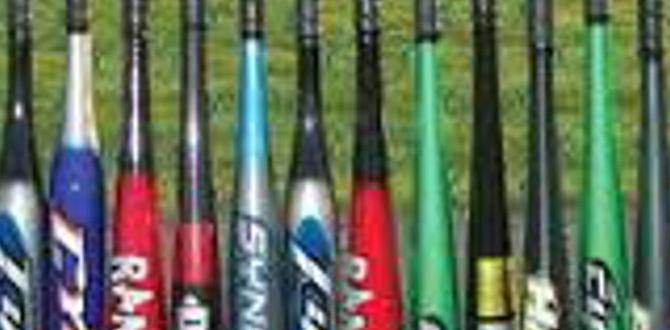Force3 Catchers Knee Savers provide exceptional comfort and protection for catchers, significantly reducing knee pain and impact during games and practices. They are a game-changer for improving a catcher’s ability to stay low, move effectively, and perform at their best, making them a worthwhile investment for any serious player.
Hey team! John P. Miller here from FriskMode. If you’ve ever spent a baseball game crouched behind the plate, you know how much your knees can feel it the next day. That deep ache? It’s common, but it doesn’t have to be a deal-breaker for catchers. We’re here to talk about a game-changing piece of equipment: Force3 Catchers Knee Savers. Forget about knee pain slowing you down. We’re going to dive into how these savers work their magic, why they’re a must-have, and how they’ll help you play longer and stronger. Get ready to make your knees thank you!
Why Catchers Kneel: The Foundation of the Position
Being a catcher in baseball is one of the most demanding positions on the field, physically and mentally. A huge part of that physicality comes from the stance. Catchers spend countless innings in a deep, athletic crouch, their knees absorbing a tremendous amount of force and pressure with every pitch. This position isn’t just about holding your ground; it’s about being ready to move explosively to block a pitch, frame one, or throw out a runner.
The constant strain on the knees comes from several factors:
- Impact: Every time the catcher drops into the squat, their knees take a hit. This is amplified when blocking wild pitches or foul tips.
- Pressure: Maintaining that low stance for extended periods puts sustained pressure on the kneecaps and surrounding ligaments.
- Repetitive Motion: The act of squatting, rising, and shifting weight over and over can lead to wear and tear.
- Angular Forces: When making plays, catchers often twist or move at awkward angles while still in a low position, adding stress.
It’s easy to see why knee pain and discomfort are such common complaints among catchers at all levels, from youth leagues to the pros. While good conditioning and proper technique play a role in preventing injuries, sometimes the gear itself needs an upgrade to help manage the inherent stress of the position. That’s where innovations like the Force3 Catcher’s Knee Savers come into play, aiming to redefine what comfortable and protective catcher’s gear can be.
Introducing Force3 Catchers Knee Savers: Revolutionizing Knee Protection
For years, catchers have relied on bulky pads and generic solutions that offer basic cushioning but fall short of addressing the unique demands of the position. Force3 recognized this gap and developed a specialized solution designed to provide targeted comfort and superior protection where catchers need it most. The Force3 Catchers Knee Savers aren’t just another piece of padding; they’re an engineered system focused on absorbing shock and distributing pressure effectively.
What sets these knee savers apart? It’s their innovative design, which leverages advanced materials and a deep understanding of catcher biomechanics. They aim to:
- Absorb Impact: Significantly reduce the jolting force transmitted to the knees from blocking and squatting.
- Distribute Pressure: Spread the load across a larger area of the knee and lower leg, preventing concentrated pressure points.
- Enhance Comfort: Allow catchers to maintain their stance for longer periods without the nagging discomfort that can affect focus and performance.
- Promote Mobility: Designed to move with the player, not against them, ensuring they don’t hinder quick movements.
These knee savers are more than just an accessory; they are a critical component of a catcher’s gear, designed to keep them in the game, healthy, and performing at their peak. They represent a significant step forward in catcher-specific protective equipment.
The Technology Behind the Comfort: How Force3 Works
The magic of the Force3 Catchers Knee Savers lies in their meticulously engineered design and the materials they employ. Force3 didn’t just slap some foam onto elastic straps; they developed a system that actively works to protect your knees.
Tri-Layer Impact Absorption System
At the core of the Force3 Knee Savers is their proprietary “Tri-Layer Impact Absorption System.” This isn’t just marketing jargon; it’s a functional design that breaks down impact forces in stages:
- Outer Layer: High-Density Shell – This tough exterior is designed to withstand abrasion from the dirt and field. More importantly, it helps to spread the initial point of impact over a wider surface area. Think of it like a mini-shield for your knee.
- Middle Layer: Energy Absorbing Foam – This is where the real shock absorption happens. Force3 uses specialized closed-cell foam that, when compressed, doesn’t just bounce back. It actually converts a significant portion of the impact energy into heat through molecular friction. This means less of that jarring force travels up to your knee joint. This technology is similar in principle to the advanced impact-absorbing materials found in high-performance athletic shoes.
- Inner Layer: Comfort Liner – This soft, breathable layer sits against your skin, preventing chafing and wicking away moisture. It ensures that while the outer layers are doing the heavy lifting, your experience remains comfortable and irritation-free, even during long games.
Ergonomic Fit and Strapping
Beyond the materials, the way the knee savers attach and fit is crucial:
The straps are designed to be adjustable and secure without being constricting. They are positioned to keep the protective padding firmly in place over the kneecap and the surrounding sensitive areas. This ensures that the impact absorption system is always correctly aligned, ready to do its job when you drop into your stance or block a pitch. Unlike some bulkier catcher’s leg guards, the knee savers are streamlined, allowing for better freedom of movement.
Key Design Features Summarized:
| Feature | Benefit | Why It Matters for Catchers |
|---|---|---|
| Tri-Layer Impact Absorption | Reduces shock, disperses pressure | Minimizes knee pain and long-term wear and tear. |
| High-Density Outer Shell | Durable, distributes initial impact | Protects against abrasions and spreads force. |
| Energy Absorbing Foam | Converts impact energy | Significantly less jarring force transferred to the knee. |
| Comfort Liner | Breathable, prevents chafing | Keeps knees cool and comfortable for extended wear. |
| Ergonomic, Secure Strapping | Stays in place, flexible fit | Ensures padding is always positioned correctly without restricting movement. |
By combining these elements, Force3 has created a protective solution that addresses the unique stresses of the catcher’s position, offering a level of comfort and support that can make a real difference in a player’s ability to perform and stay healthy.
Benefits for the Catcher: Beyond Just Reducing Pain
While the primary draw of the Force3 Catchers Knee Savers is undoubtedly the comfort and reduction of knee pain, the benefits extend far beyond just feeling better after a game. These improvements can translate directly into better performance on the field and a more sustainable catching career.
Enhanced Comfort and Endurance
Imagine not having to constantly shift your weight or adjust your stance because your knees are throbbing. The significant reduction in knee discomfort allows catchers to maintain a strong, athletic crouch for longer periods. This means they can focus more on the game, reading pitches, and anticipating plays, rather than being distracted by pain. This increased comfort often leads to improved endurance, allowing catchers to perform at a high level throughout an entire game and a full season.
Improved Blocking and Fielding
When a catcher is hesitant to drop into a full squat or block a tough pitch due to knee pain, their effectiveness is immediately compromised. The confidence that comes from knowing your knees are protected by the Force3 Knee Savers allows for more aggressive and effective blocking. You can attack the ball, knowing that the impact will be absorbed. This confidence also translates to quicker transitions, better framing, and a generally more solid defensive presence behind the plate.
Protection Against Long-Term Injury
Baseball catchers are at a higher risk for developing chronic knee issues, including osteoarthritis and ligament damage, due to the repetitive stress. The advanced shock absorption technology in Force3 Knee Savers helps to mitigate this long-term wear and tear. By reducing the forces that travel through the knee joint with every squat and block, they can play a crucial role in preserving the health of a catcher’s knees for years to come. Think of it as an investment in your future playing ability and overall well-being.
Increased Agility and Responsiveness
One might assume that adding protection would make a catcher slower, but the opposite is often true with well-designed gear. The Force3 Knee Savers are designed to be low-profile and flexible. They don’t impede your natural range of motion. In fact, by providing a stable and comfortable base, they can help improve a catcher’s ability to explode out of their stance quickly, make lateral movements to block pitches, and get their body in position for throws. This improved agility means fewer passed balls and more runners thrown out.
Conf
idence to Play Aggressively
Ultimately, the greatest benefit might be the psychological one. Playing a position like catcher requires a certain fearlessness. Knowing that your equipment is actively protecting you can boost overall confidence. This allows catchers to play with more aggression, make crucial plays without hesitation, and truly command their position. It’s about having the peace of mind to give 100% on every single pitch.
Choosing the Right Catcher’s Gear: A Comprehensive Approach
While the Force3 Catchers Knee Savers are a fantastic addition for any catcher, they are part of a larger ecosystem of essential gear. To truly perform your best and stay protected, you need to consider your entire catcher’s setup. Think of it like building a strong defense – each piece needs to work together.
The Catcher’s Mitt
Your mitt is an extension of your hand and your primary tool for catching the ball. A good catcher’s mitt is typically heavier and has a deeper pocket than other gloves, designed to help secure pitches and frame them effectively. When choosing a mitt:
- Size: Youth sizes are generally smaller, while adult mitts are larger. Ensure it fits your hand well.
- Pocket Depth: A deeper pocket helps prevent balls from popping out.
- Break-in: Most catcher’s mitts require a significant break-in period. Look for models known for easier break-ins or be prepared to put in the work.
- Material: High-quality leather is standard for durability and feel.
For youth players, a mitt that’s easier to break in can be a great advantage. Organizations like USA Baseball provide guidance on equipment standards, ensuring safety and fair play.
The Mask, Helmet, and Chest Protector
This is your primary protection against errant pitches and collisions. The combination of a mask, helmet, and chest protector is non-negotiable for safety. Modern catcher’s gear is designed to offer excellent protection without sacrificing mobility.
- Helmet/Mask Combo: Look for a system that fits securely and offers good visibility. Many modern designs combine the helmet and mask into a single, robust unit. Many manufacturers offer different models for youth, intermediate, and professional levels.
- Chest Protector: Should fit snugly to protect the chest, throat, and collarbone from foul balls and impacts. Adjustable straps are key for a secure fit.
- Shin/Leg Guards: These are crucial for protecting the shins, knees, and ankles from foul tips and blocked pitches. This is where the Force3 Knee Savers integrate, offering an additional layer of specialized protection directly to the knees.
The Catcher’s Helmet/Mask: A Closer Look at Protection
The helmet and mask are your face’s first line of defense. Modern catcher’s helmets are advanced pieces of equipment designed with materials like high-impact ABS plastic and steel cages. Brands like Rawlings, Wilson, and Easton offer various styles. It’s important to ensure the cage is robust enough to withstand impacts and that the helmet itself is designed for shock absorption. The National Federation of State High School Associations (NFHS) offers guidelines on approved protective equipment for scholastic play, which can be a good reference for safety standards.
Catcher’s Pants and Other Accessories
While less critical than the protective gear, comfortable and durable catcher’s pants can make a difference. Some are reinforced in key areas. Sliding shorts or pads can also add an extra layer of comfort and protection for the hips and thighs.
It’s also worth mentioning throat protectors, which are often integrated into masks but can be separate pieces. These are vital for protecting the neck area.
The Role of Force3 Knee Savers within Your Gear
The Force3 Knee Savers are designed to be worn underneath your catcher’s leg guards or shin guards. They are not a replacement for them but rather a targeted upgrade for knee comfort and impact protection. When you combine the broad protection of leg guards with the specialized, shock-absorbing technology of the Force3 Knee Savers, you create a powerful system that significantly elevates your defense behind the plate. This layered approach ensures that you’re protected from direct impacts while also mitigating the internal stresses on your joints.
Training and Conditioning for Catchers: Supporting Your Knees
While Force3 Knee Savers offer fantastic external protection, building strong, resilient knees from the inside out is equally crucial. Proper training and conditioning can significantly enhance a catcher’s performance and help prevent injuries. This involves a combination of strength training, flexibility work, and sport-specific drills.
Strength Training for Catchers
Focusing on leg strength is paramount. Exercises that target the quadriceps, hamstrings, glutes, and calves will provide a stable base and help absorb shock.
- Squats: Bodyweight squats, goblet squats, and barbell squats (as appropriate for skill level) are fundamental for building overall leg strength and endurance in the catcher’s stance.
- Lunges: Forward, reverse, and lateral lunges improve balance, unilateral leg strength, and hip mobility, all critical for quick defensive movements.
- Deadlifts: Romanian deadlifts and conventional deadlifts build posterior chain strength (hamstrings, glutes, lower back), which is vital for power and injury prevention.
- Calf Raises: Strong calves aid in explosive movements and proper landing mechanics.
Flexibility and Mobility
Catchers need to be flexible, especially in the hips and ankles, to achieve and maintain a deep, athletic squat. Tightness here can put extra strain on the knees.
- Hip Flexor Stretches: Crucial for opening up the hips and allowing a deeper squat.
- Hamstring Stretches: Improve flexibility in the back of the thighs.
- Ankle Mobility Drills: Exercises like ankle circles and calf stretches help improve range of motion.
- Dynamic Warm-ups: Before any practice or game, a dynamic warm-up including leg swings, high knees, and butt kicks prepares the muscles and joints for activity.
Catcher-Specific Drills
Practicing the core movements of catching reinforces good habits and builds muscle memory. These drills, when performed with proper technique, naturally contribute to knee health when supported by good gear.
Here are some examples of drills that can be implemented:
- Blocking Drills: Start with stationary blocking against a wall or a coach. Gradually progress to blocking live pitches. Focus on dropping the chest, keeping the glove down, and receiving the ball with the arm-side leg slightly bent and the glove



